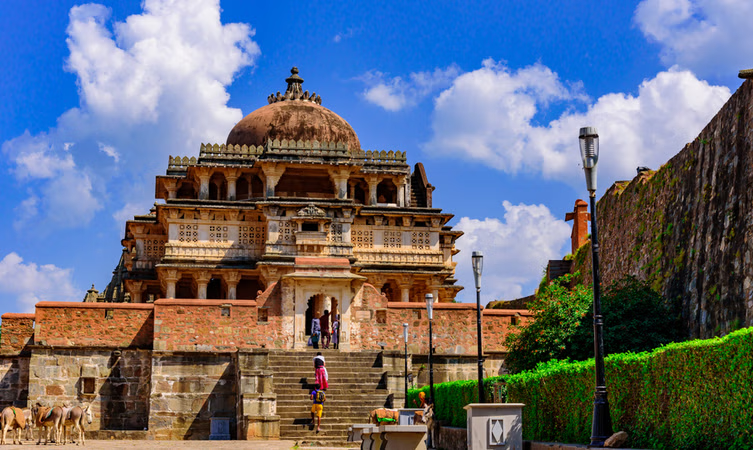Stunning Attractions and Scenery in Kumbhalgarh
Tucked away in the rugged folds of the Aravalli Hills in Rajasthan, Kumbhalgarh is a hidden jewel that boasts rich history, breathtaking landscapes, and architectural marvels. Best known for its formidable fort and sprawling wildlife sanctuary, Kumbhalgarh offers a perfect blend of heritage and natural beauty, making it a must-visit for history buffs, photographers, and nature lovers alike.
1. Kumbhalgarh Fort – The Great Wall of India
At the heart of Kumbhalgarh lies its majestic fort, a UNESCO World Heritage Site built by Rana Kumbha in the 15th century. This hilltop fortress is famed for having the second-longest continuous wall in the world—a staggering 36 kilometers long—earning it the nickname “The Great Wall of India.” The fort is perched over 1,100 meters above sea level, offering panoramic views of the Aravallis, especially stunning at sunrise and sunset. The architecture is grand, with seven massive gateways and thick stone ramparts that once made the fort almost impregnable.
2. Badal Mahal – Palace in the Clouds
Located at the top of the fort, Badal Mahal or the “Palace of Clouds” is one of the most scenic spots in Kumbhalgarh. This two-storied palace is divided into the Mardana (men’s section) and Zanana (women’s section), both adorned with beautiful frescoes and vibrant wall paintings. The palace provides breathtaking views of the surrounding valleys and forests, often veiled in mist, especially during the monsoon. It’s a serene, dreamy location that reflects the romance of Rajput architecture.
3. Temples Inside the Fort Complex
Kumbhalgarh Fort houses over 360 temples, showcasing the religious diversity of its time. Among the most notable are:
- Vedi Temple: A Jain temple known for its unique octagonal shape and ornate stonework.
- Neelkanth Mahadev Temple: Dedicated to Lord Shiva, this temple features a six-foot-high Shivlinga and is revered for its spiritual energy and architectural elegance.
These temples, set against the backdrop of the fort’s mighty walls and hilly terrain, offer a peaceful, spiritual atmosphere.
4. Kumbhalgarh Wildlife Sanctuary
Encircling the fort is the vast Kumbhalgarh Wildlife Sanctuary, spanning over 600 square kilometers. The sanctuary is a haven for wildlife enthusiasts and trekkers, home to animals like leopards, sloth bears, hyenas, antelopes, and more than 200 species of birds. Visitors can enjoy jeep safaris, nature walks, or even horseback riding through the sanctuary, especially during the lush monsoon season when the landscape turns vibrantly green.
5. Parshuram Mahadev Cave Temple
About 10 kilometers from Kumbhalgarh, the Parshuram Mahadev Temple is a hidden cave temple dedicated to Lord Shiva. Reached after a moderate trek through the hills, the temple features naturally formed Shiva lingas and scenic waterfalls nearby, especially during monsoon. It’s a peaceful, less-crowded spiritual escape offering both adventure and tranquility.
6. Light and Sound Show
In the evening, the fort hosts a light and sound show that brings its history to life. The dramatic lighting against the ancient walls combined with the powerful narration of Rajput valor creates a truly mesmerizing experience.
